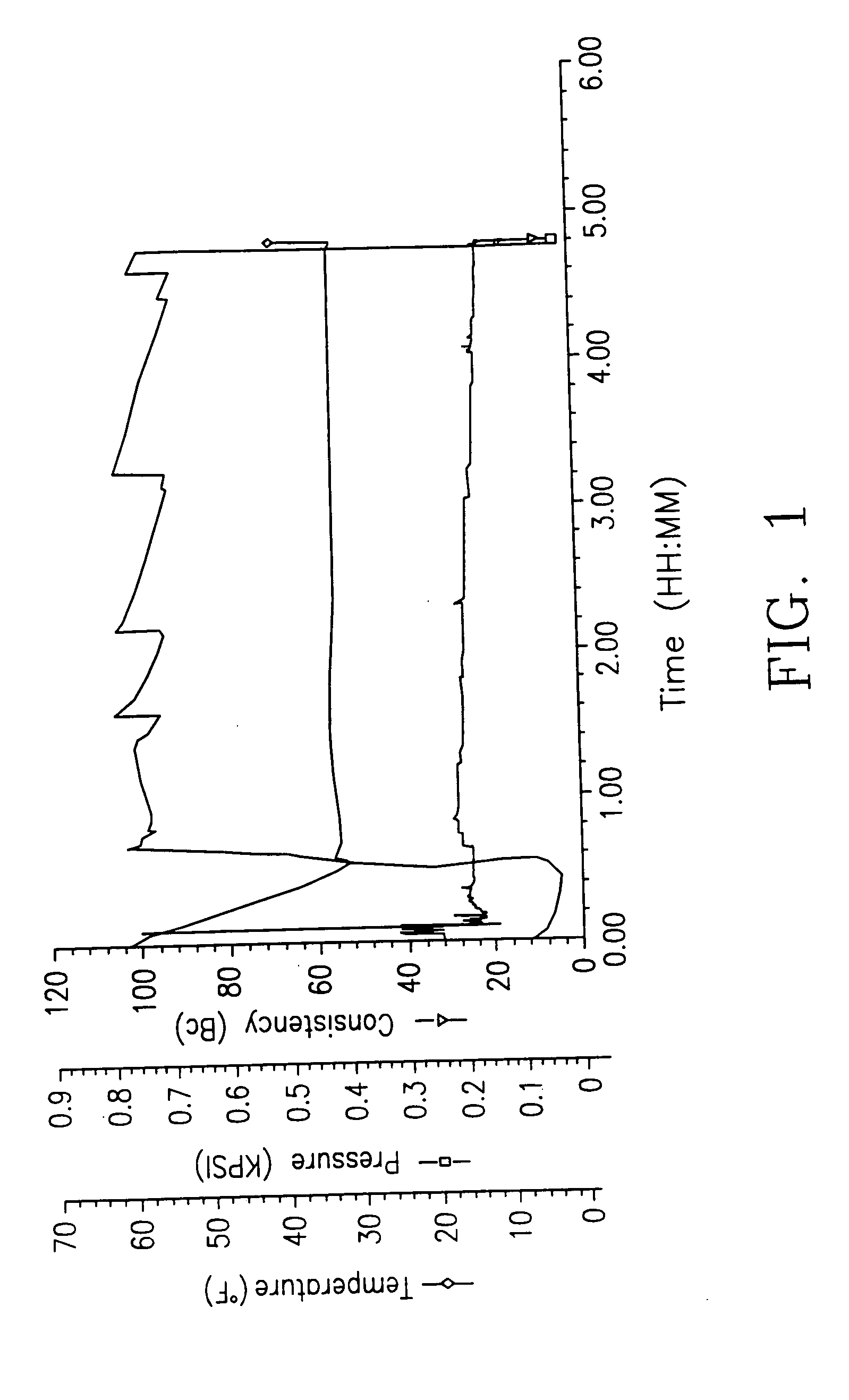Permafrost ceramicrete
a technology of permafrost and ceramics, applied in the field of permafrost ceramics, can solve the problems of cracking the structure, affecting the stability of the structure, and affecting the performance of the cement,
- Summary
- Abstract
- Description
- Claims
- Application Information
AI Technical Summary
Benefits of technology
Problems solved by technology
Method used
Image
Examples
example 1
Limits on Composition of the Slurry
[0030] To determine limits on composition of the slurry, several compositions were attempted and the slurry was maintained in freezing environment (30° F.) to see if it sets. Table 2 provides these compositions, observations and inferences of the tests.
TABLE 2Observations in the tests with various compositions of theinvented cementBoricBinderAshacidObservations(wt. %)(wt. %)(wt. %)and inferences40600.5The water in the slurry froze and the cementdid not set. It needs a minimum amount ofKH2PO4 to lower the freezing point, whichthis composition did not have.50500.5These cements set well in freezingenvironment. They had sufficient KH2PO4 to60400.5lower the freezing point below 30° F.Viscosity was too high and consistency was50500more than 30 Bc. This means at least0.5 wt. % boric acid is needed to lubricateparticles.
These examples indicate that a minimum of 50 wt. % must be the binder in the blend of the cement and an addition of at least 0.5 wt. %...
example 2
Pumpability of the Cement
To demonstrate the pumpability of the invented cement, thickness-time test was conducted using a consistometer and American Petroleum Standards (Spec. 10) procedure.
[0031] The cement with the composition given in the second row in table 2 was tested at 40° F. and 30° F. and at a pressure of 700 psi. In both cases, the pumping viscosity of the slurry was 13 Bearden units (Bc) throughout. A viscosity of up to 30 Bc is acceptable for pumping and the results of this test showed that the viscosity is very low and hence this cement will pump very well in permafrost region. Without boric acid, the viscosity was too high. FIG. 1 shows the time and thickness graph in the test at 30° F. The pumping time for this cement was more than five hours. This is an important aspect of this cement that it does not set when being mixed or pumped and only hardens when placed. Thus, there is no danger of flash-setting and clogging the pipes will be encountered with this cement. ...
example 3
Durability of the Inventive Cement in Freeze Thaw Cycles in Liquid Nitrogen
[0032] Using the composition given in second row of Table 2, cubes of the cements of ASTM standard specifications (2×2×2 in3) were made. They were cured for one week and then immersed in liquid nitrogen, left there for 15 minutes and removed. The one made only with Class C fly ash showed cracks and fell apart eventually under cryogenic fracture tests. The one made with class F ash showed some surface cracks initially, but those these cracks healed. It was dipped ≈15 times and taken out but it showed no loss of any integrity. In another test, a small cup of 10 cms wall thickness and ≈100 ml volume was made with the same composition. Liquid nitrogen was poured in it and even after several minutes, one could hold the cup in bare hands without feeling the frost on hand. This demonstrated that the composition with only Class F is not only durable, but also a good insulating dewar for storage of cryogenic fluids. ...
PUM
| Property | Measurement | Unit |
|---|---|---|
| pressure | aaaaa | aaaaa |
| pumping time | aaaaa | aaaaa |
| compressive strength | aaaaa | aaaaa |
Abstract
Description
Claims
Application Information
 Login to View More
Login to View More - R&D
- Intellectual Property
- Life Sciences
- Materials
- Tech Scout
- Unparalleled Data Quality
- Higher Quality Content
- 60% Fewer Hallucinations
Browse by: Latest US Patents, China's latest patents, Technical Efficacy Thesaurus, Application Domain, Technology Topic, Popular Technical Reports.
© 2025 PatSnap. All rights reserved.Legal|Privacy policy|Modern Slavery Act Transparency Statement|Sitemap|About US| Contact US: help@patsnap.com


